Getting from Kyoto to Mount Koya required a zen-like focus that was rivaled only by the meditating monks at the monastery where we spent the night.
It took seven legs to get here — a taxi from our hotel to Kyoto Station, a JR (Japan Railway) train to Osaka, followed by the subway to a local train, then another local train to a cable car up the mountain (the steepest I’ve ever seen), a bus into the village, then a walk of less than a mile to the Saizenin Monastery. 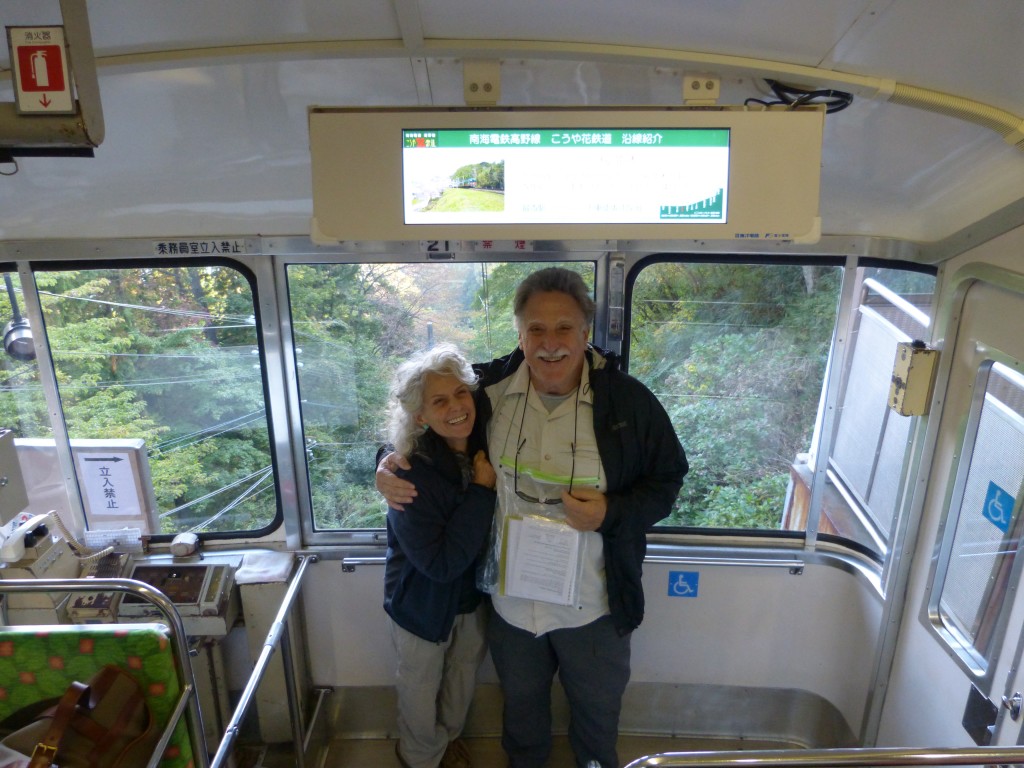
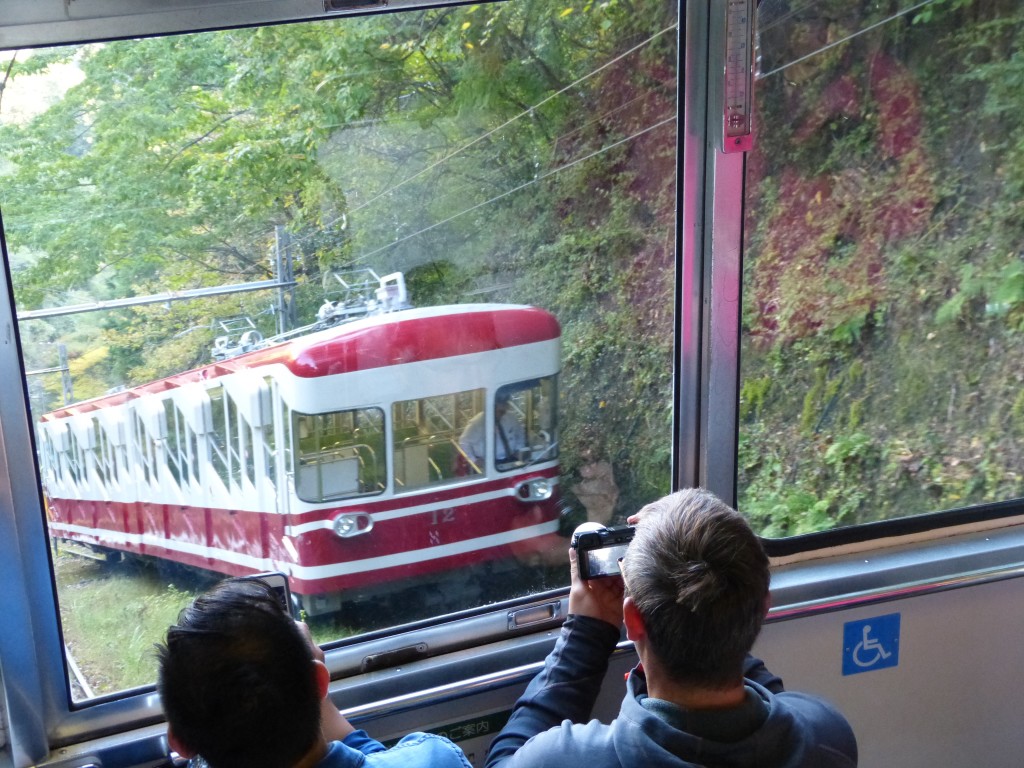
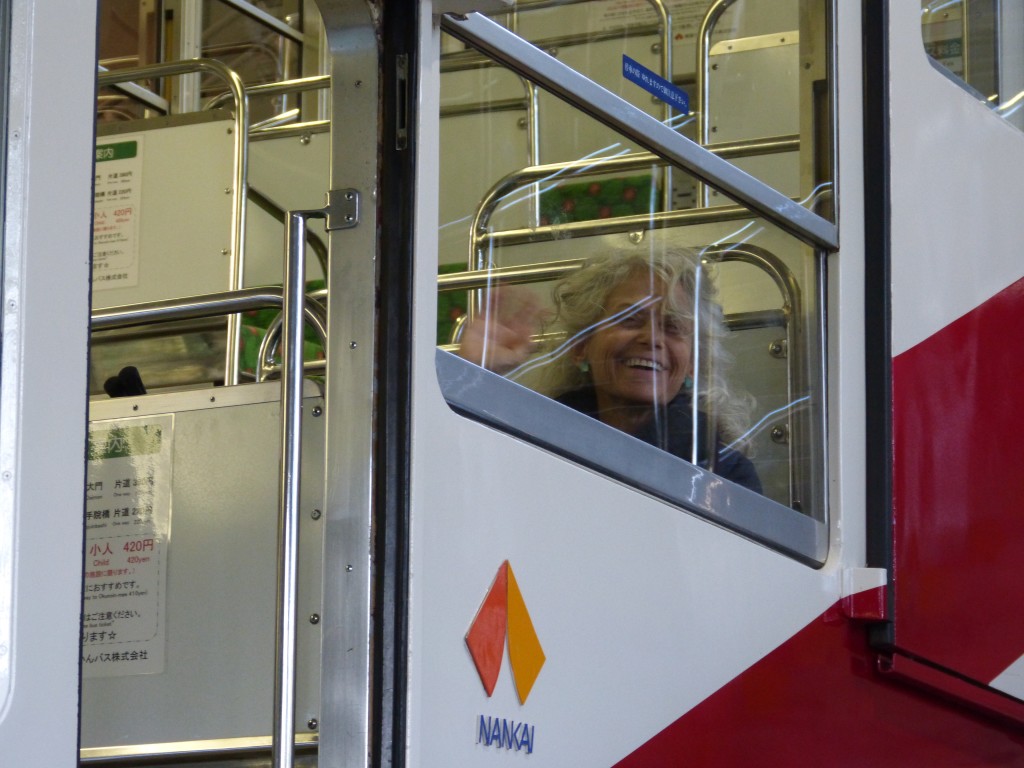 All connections were tight so a failure of concentration would have been inconvenient, to say the least. But we made it without a hitch, though with many beads of sweat as we lugged the heavy day packs we would have to live out of for the next several days on the Kumano Kodo Trail.
All connections were tight so a failure of concentration would have been inconvenient, to say the least. But we made it without a hitch, though with many beads of sweat as we lugged the heavy day packs we would have to live out of for the next several days on the Kumano Kodo Trail.
Mount Koya is a special place in the spiritual history of Japan. Since the 9th Century, when the monk Kobo Daishi founded the first temple on the mountain and established the Shingon sect of Buddhism, devout Japanese have started their religious pilgrimages on Mount Koya. The setting is stunning — steep, heavily-wooded hills covered with tall cedars, views that are broken up only by peaceful villages of Japanese style houses with red shingled roofs.
Saizenin Monastery was everything I had hoped for. Frazzled by concentrating all day on the excellent but intricate travel instructions provided by OKU Japan, the tour operator that had organized and was hosting our trip, I sat back and relaxed….sort of. First, there is no sitting back in a Japanese monastery. The thin but elegant cushions on the floor with no back rests made it impossible for me to slouch and lounge, my default position for kicking back and relaxing.
Second, I just didn’t know how to act. I’m a bit of a bull in a China shop, so it was a challenge to behave in a way that wouldn’t attract too much attention. Despite having read a fair amount in preparation for the trip, the simplest acts, ones I never think about when I’m home, required as much zen-like focus as the journey to get here — using the right slippers (e.g., there are different slippers to be used in the shared bathroom); aligning them up appropriately (apparently I did not — the guy who entered the dining room after me, bent over to reshuffle our slippers so that they all pointed out); preparing myself properly for the bath (e.g., making sure to wash off all of the soap on my privates before entering the bath – I know, TMI).
And after taking our places at dinner, I wasn’t sure when to start eating. Among the dozen or so guests we were the only gaijin in the place. Everyone sat still and quiet (in positions that I couldn’t attain even in my youth when my knees were still somewhat healthy). I just looked around and waited until I saw someone start eating. Then the challenge was to figure out what to eat first and how and with what, etc. In any case we managed. The meal was vegetarian, of course, not my usual preference, but it was excellent.
At some point I figured what the hell and just tried to be relatively unobstrusive, not easy for a loud, large former Philadelphian. But they didn’t throw us out, or even glare at us, so I guess we did all right. Next time, though, I’ll know how to line up the slippers.
Despite the forced concentration and potential embarrassment, the experience was well worth the effort. The monastery was strikingly beautiful, as was the centuries-old scarlet pagoda right across the road. 


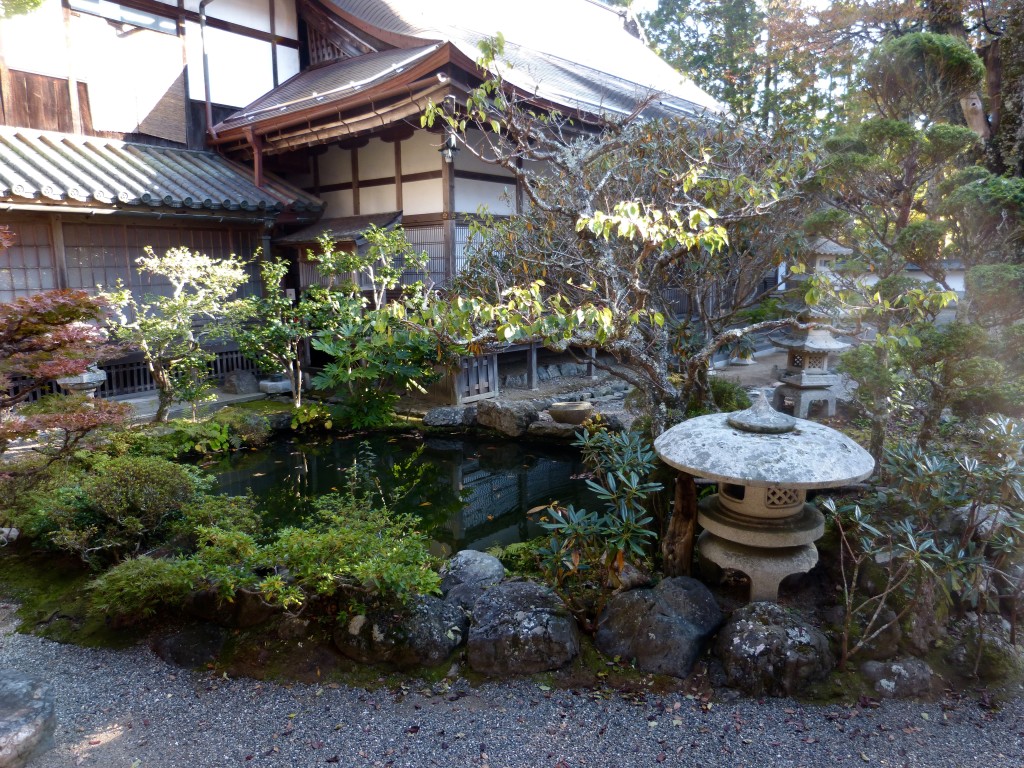

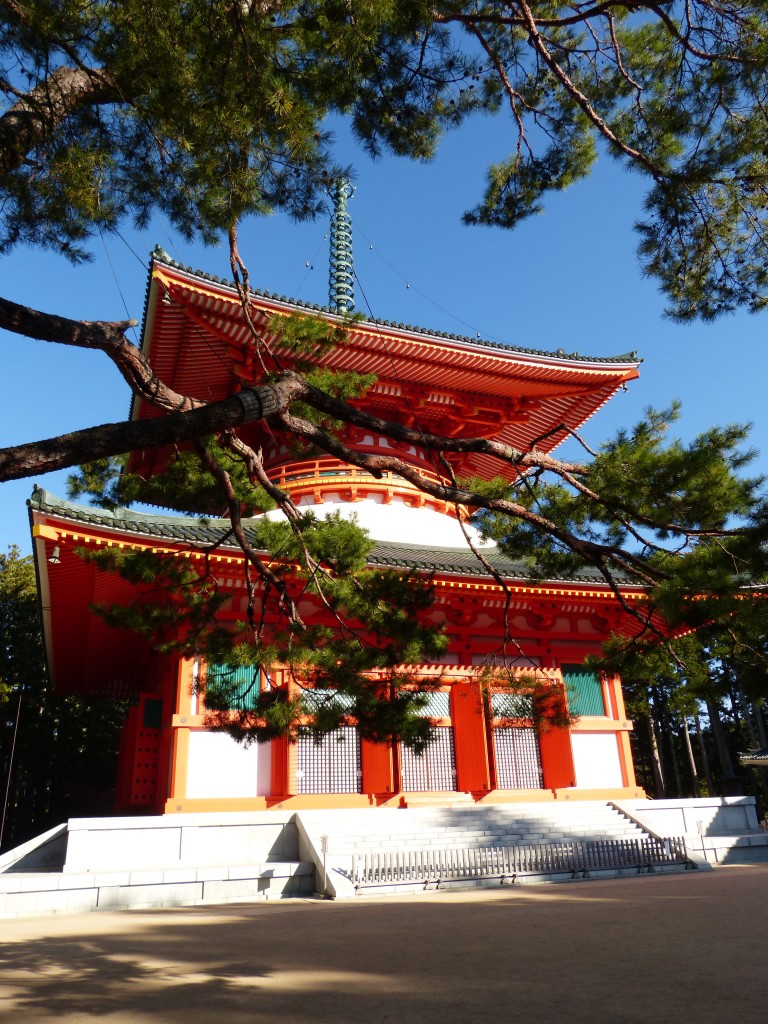 The serene simplicity of the design, décor and especially, the gardens soothed me, even when I contemplated the challenging journey the next day to get to the start of the trail.
The serene simplicity of the design, décor and especially, the gardens soothed me, even when I contemplated the challenging journey the next day to get to the start of the trail.
Now that I know how to get here, and how to behave (sort of), I would almost like to try it again. But the trail beckons. My spiritual cleansing will have to continue on the glute-burning ups-and-downs of the Kumano Kodo Trail.
(Don and Katherine’s trip was organized and hosted by OKU JAPAN)
